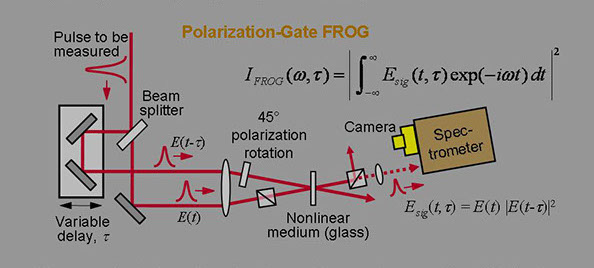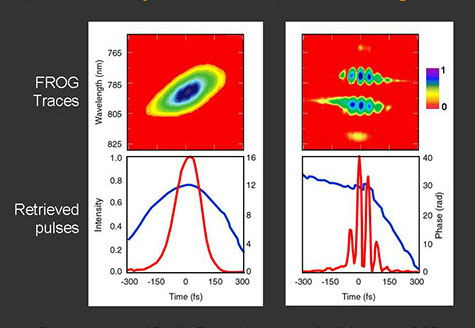There are many versions of FROG. For example, replacing the nonlinear-optical process (SHG in the previous slide) with a different nonlinear-optical process, such as polarization-gating (PG), yields a technique with different properties. PG FROG, shown below, requires more pulse intensity than SHG FROG, but it can measure a pulse with a much broader spectral range. It also yields more intuitive traces.
In PG FROG, a 45-degree-polarized pulse gates a vertically or horizontally polarized pulse that passes through crossed polarizers.


Pulses measured using PG FROG.
Other versions of FROG include Transient-Grating (TG) FROG, which can measure UV pulses and has traces just like those of PG FROG; XFROG, which uses a known gate pulse and measures a standard spectrogram; and many others. See our 1997 review article and our more recent review.
